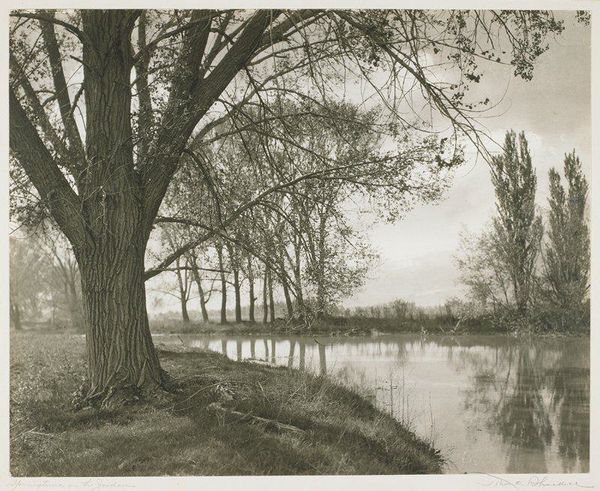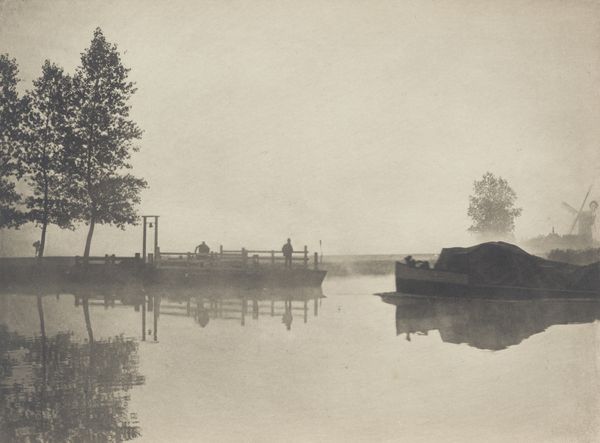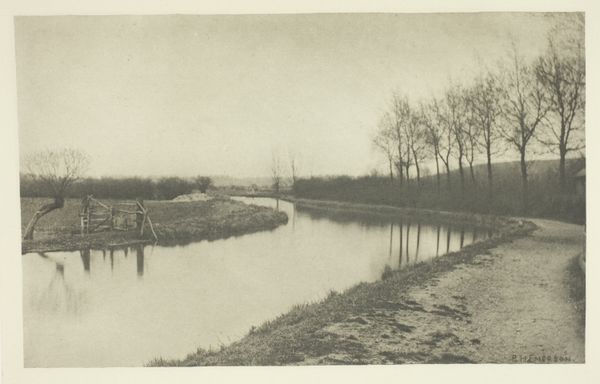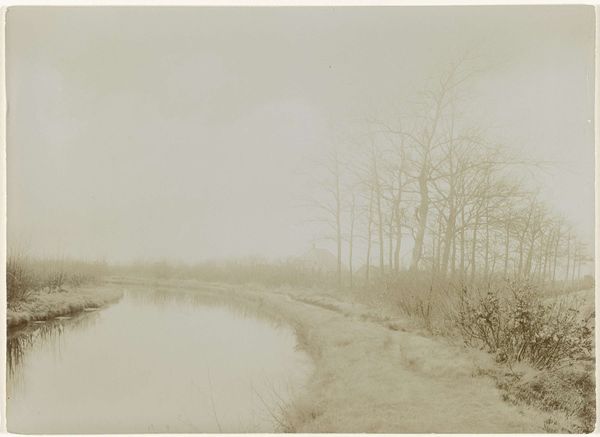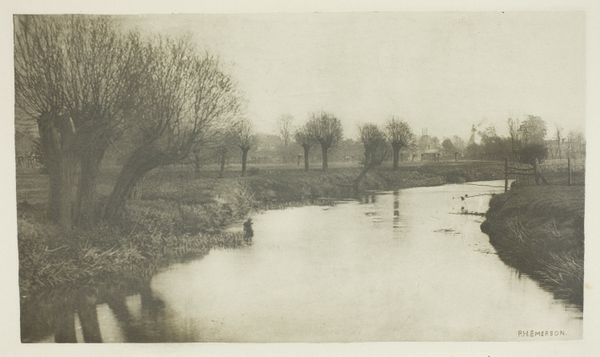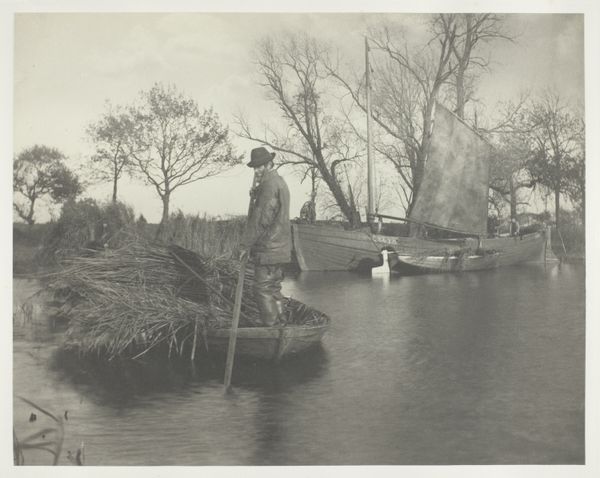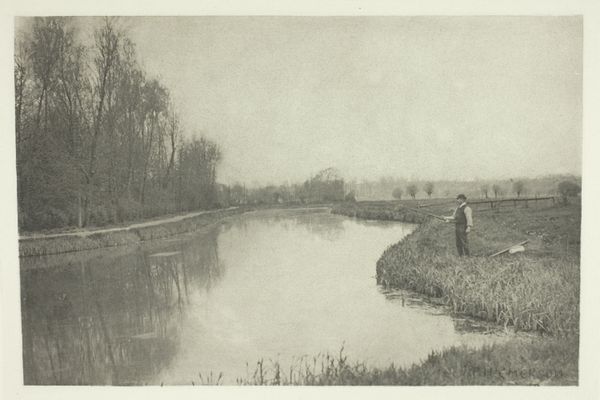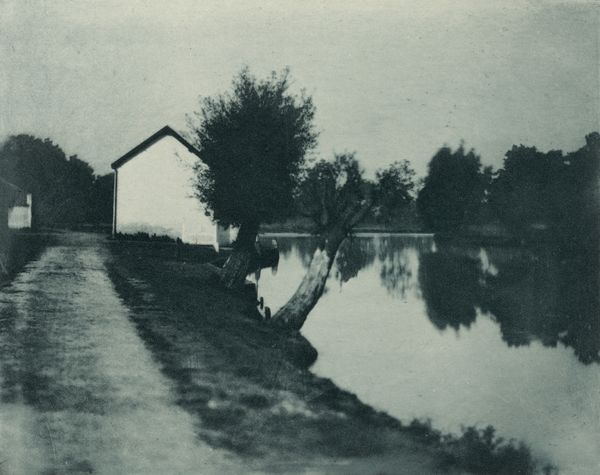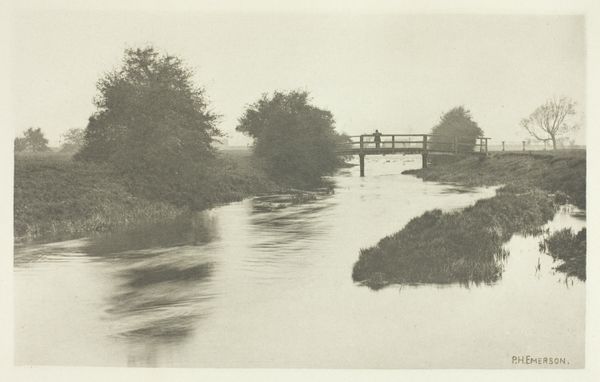
print, photography
#
16_19th-century
#
pictorialism
# print
#
impressionism
#
landscape
#
photography
#
folk-art
Dimensions: 12.7 × 18.5 cm (image); 14.7 × 20.2 cm (paper); 24.8 × 32 cm (album page)
Copyright: Public Domain
Curator: This is Peter Henry Emerson's photograph, "The Compleat Angler," taken around the 1880s. It’s currently part of the collection at the Art Institute of Chicago. What strikes you most when you first look at it? Editor: The silvery tonality is instantly captivating, and that misty, soft-focus landscape exudes a sort of melancholy. It almost looks like a sketch or a painting; I find myself focusing on the textures. Curator: Precisely. Emerson was a key figure in the Pictorialist movement, advocating for photography as fine art. This image embodies his commitment to capturing rural life and labor using specific photographic techniques. Notice the careful composition and the depth of field; these processes elevate the image beyond mere documentation. Editor: Right. Focusing on the materials, I think it's interesting that this isn’t just a straightforward representation of the scene. It's a constructed image, in a sense, meant to evoke a mood and an aesthetic ideal rooted in late 19th century sensibilities. Emerson uses light and shadow in quite dramatic ways to add to the visual interest of this simple scene of a horse and wagon along the water. Curator: The focus isn't just on a pretty picture, it’s meant to portray an objective observation of a disappearing way of life. Emerson’s intention was to document these landscapes authentically. He challenged artifice and manipulation—the kind that goes into sentimental genre painting for example. He believed in "truth to nature" achieved through careful selection and observation of details. He rejected artificial studio sets. Editor: Yet there's also an undeniably aesthetic quality to his so-called 'naturalism' with its focus on formal qualities of light and composition. The placement of that horse and cart really lead your eye from foreground to background, creating spatial depth using reflections in the water as an anchor. Curator: Indeed. And through his use of platinum prints—a labor intensive technique-- he ensured these photographs themselves became precious objects to be collected and exhibited like paintings, helping shift perceptions of photography within art. Editor: So, what starts as what appears to be documentary turns out to be a highly crafted meditation on light, form, and our relationship to the landscape around us. Curator: That intersection of labor, materials, social context and technique makes this so much more than just a pastoral scene. Editor: Ultimately, Emerson delivers a carefully composed, compelling visual statement despite any intention toward pure objectivity.
Comments
No comments
Be the first to comment and join the conversation on the ultimate creative platform.
